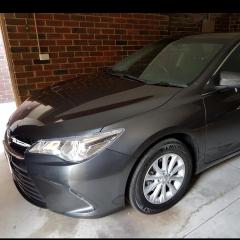-
Latest Postings
-
1
Gen 6 Cluster Backlighting Issues
When the fuse blows do your f & R parking lights still light up -
0
Hilux surf
Hi guys I have a 1994 hilux surf and the engine light comes on sometimes I've had it looked at and it has a code g26 the mechanic is not sure what it is dose anyone know what it could be also it won't rev past 3k -
6
Buying a Hilux / Surf
Hi all I need advice I have a 94 hilux surf and it has a code g26 and won't rev past 3k I've taken it to a mechanic but they are not sure what it is has been scanned but nothing anyone have have the same -
0
05 hiace ecu
Hi all, new member needing some help with an issue that has me stumped, replacing ignition and had a short somehow. Van would not crank or obviously start, found blown fuse and replaced, now car cranks but won’t start, no check engine light when ignition is first turned on and scan tool will not communicate with ecu. All fuses good except fuse 26 on instrument panel fuse box has no power. almost convinced my ecu is cooked but before outlaying for a new one thought someone may either advise another possible cause or confirm ecu likely the issue, appreciate any advise or experience similar. -
0
1989 Hilux Low Voltage
Hey all, recently got a 1989 Hilux with the petrol 22r engine. I had plugged a voltage meter into the 12v socket because I suspected an electrical problem as the battery light had been on. It had read 11.9 volts initially but the more I drive the more it deteriorates, currently sitting at 10.9 (after several hours of driving) when the engine is running. This obviously doesn't charge the battery and it can't start by itself. I have since replaced the battery and yesterday I did the alternator with a brand new one. I've checked all the grounds that I can see but it's still sitting at 10.9 volts and deteriorates over time. I was thinking the voltage regulator is the next best bet? I looked at it visually and it seems fine. Anyone got any other ideas? Note: I had a very long drive the other week and on one occasion the voltage spiked back up to 15+ volts for a short while before going back down to about 11.4 And yeah I'm trying not to drive it too much because I know it's probably damaging the battery being on such low voltage. Any help would be awesome thanks! -
27
FUEL WARNING MESSAGE
Photo below showing remotely mounted relay for sup pump and switch to connect relay coil to earth when required. The earth connection for the switch was found using a test light in an empty relay socket just near where the relay is now mounted. You can trace the solid black wire. Btw, I soldered all the crimp connectors. I don't have a lot of faith in crimp connectors. Geoff -
27
FUEL WARNING MESSAGE
No, I didn't see a fuel filter, but the inside of the tank was spotless. The pump wasn't running - blocked filter or not. Geoff -
27
FUEL WARNING MESSAGE
Geoff, did you check the fuel filter that protects the transfer pump from blockages? Tony -
0
Wanting to build my car.
I’ve brought my first car a while ago it’s a 2008 Toyota Aurion sportivo zr6 it has 215xxx kms I’ve been wanting to modify it as it is tidy but I’m unsure if I should since the car is this old and I have had to replace the oil cooler lines a month ago (my car dumped its oil on me) just unsure if they go good after a certain age. what I do want to do to it is. wheels lowering springs or coil overs stiffer sway bar exhaust tint all round after market head lights and tail lights (if any of you know decent ones could you shear a link as I’ve only been able to find some on eBay) if there is anything else that would make it look good like body kits if there are any would be nice to know. Thanks in advance IMG_0918.cr2 -
0
2004 hzj79 surging/jolting
Gday Ive got a problem with my 2004 hzj79 with 235,000kms with no turbo, ive takin it to a few places all have different answers. At 1400rpm just on light throttle it seems to be surging/jolting as if your on and off the accelerator. Ive recently had the head gasket, head, injectors, fuel filters and timming belt all done and is still happening after the works been done. Has anyone else had the same problem before or be able to point me in right direction? Cheers.
-




Recommended Posts
Join the conversation
You can post now and register later. If you have an account, sign in now to post with your account.